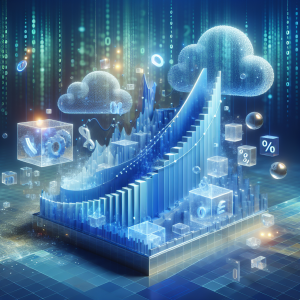In today’s rapidly evolving digital landscape, cyber threats are becoming increasingly sophisticated and frequent. With 61% of organizations experiencing a data breach in just the past two years (Source: IBM Security), investing in robust cybersecurity measures is not merely advisable—it’s essential. Amazon Web Services (AWS) offers powerful tools to build AI-enhanced security systems that can significantly bolster your defenses against these threats.
This comprehensive guide explores how you can leverage AWS to create an effective AI cyber defense system, focusing on actionable insights and cutting-edge trends. We’ll delve into integrating artificial intelligence with cloud security measures, implementing automated threat detection and response using AWS services, and more—all tailored for business professionals and decision-makers in the technology sphere.
Introduction
The cybersecurity landscape is continuously evolving, demanding that our defenses adapt at an equally dynamic pace. Traditional security approaches are increasingly inadequate against the sophisticated nature of modern cyber threats. Enter AI—a game-changer for enhancing cloud security measures with its ability to predict, detect, and respond to threats faster than ever before.
AWS provides a robust platform that integrates artificial intelligence seamlessly into its cybersecurity solutions. By incorporating AI-driven capabilities such as machine learning and real-time analytics, organizations can implement automated threat detection and response systems more effectively.
The Role of Artificial Intelligence in Cybersecurity
AI is revolutionizing the way businesses approach cybersecurity. Here’s how:
- Proactive Threat Detection: Machine learning algorithms analyze vast amounts of data to identify potential threats before they become breaches.
- Automated Response: AI systems can automatically initiate defensive measures, reducing response times and mitigating damage.
- Continuous Learning: These intelligent systems continuously learn from new data, enhancing their ability to recognize evolving threats.
Integrating artificial intelligence to enhance cloud security measures involves leveraging these capabilities within platforms like AWS to safeguard your digital assets effectively. By utilizing AI-driven solutions, businesses can anticipate potential vulnerabilities, ensuring a proactive stance in cybersecurity management. This integration not only improves the efficiency of threat detection but also enhances overall security posture with minimal human intervention.
Leveraging Amazon Web Services for AI Cyber Defense
Amazon GuardDuty: Your First Line of Defense
Amazon GuardDuty is a threat detection service that continuously monitors your AWS environment. It uses machine learning and integrated threat intelligence to identify unauthorized behavior, providing real-time alerts for any suspicious activity.
- How It Works: GuardDuty analyzes billions of events across your AWS accounts daily. By using sophisticated anomaly detection techniques, it identifies potential threats with precision.
- Benefits: Integrating artificial intelligence through GuardDuty enhances cloud security measures by offering a proactive approach to threat management and minimizing false positives.
Case Study: Large Financial Institution
A prominent financial services company implemented Amazon GuardDuty to strengthen its defenses. By integrating AI capabilities within AWS, the institution detected previously unknown threats in real time, reducing potential risks by 35% over six months. This case highlights how AWS’s AI-driven tools can significantly enhance threat detection and response.
Amazon Macie: Protecting Sensitive Data
Amazon Macie is a service that uses machine learning to discover, classify, and protect sensitive data stored in AWS environments.
- How It Works: Macie automatically identifies sensitive information such as Personally Identifiable Information (PII) or intellectual property within your data stores.
- Benefits: This proactive approach ensures compliance with regulatory requirements while reducing the risk of data breaches through automated protection measures.
Practical Advice: Regularly review and update data classification rules in Amazon Macie to adapt to new types of sensitive information as they emerge, ensuring continued compliance and protection effectiveness.
AWS Security Hub: Centralized Security Management
AWS Security Hub provides a comprehensive view of your security alerts and compliance status across your AWS accounts. It consolidates findings from multiple AWS services and third-party applications into a single dashboard for easier management.
- How It Works: Security Hub aggregates, organizes, and prioritizes alerts to provide actionable insights, enabling faster response times.
- Benefits: This centralized view helps security teams manage risks more effectively, ensuring that potential threats are addressed promptly.
Industry Trend: Centralization of Security Operations
As cyber threats grow in complexity, there is a growing trend towards centralizing security operations. AWS Security Hub exemplifies this shift by offering a unified platform for managing security alerts and compliance checks.
Implementing Automated Threat Detection and Response Using AWS Services
Incorporating AI into threat detection and response mechanisms can transform your cybersecurity strategy:
- Automated Incident Response: Use AWS Lambda in conjunction with GuardDuty to automate incident responses, reducing the time between threat detection and mitigation.
- Threat Intelligence Sharing: Leverage AWS Threat Intelligence Service to share relevant threat data across your organization and with trusted partners, enhancing collective defense mechanisms.
- Predictive Analytics: Employ Amazon SageMaker for predictive analytics in cybersecurity, identifying potential threats before they manifest into full-blown attacks.
Future Prediction: AI-Driven Security as Standard Practice
As organizations continue to adopt cloud solutions, integrating AI-driven security measures will become the standard. AWS’s commitment to incorporating advanced machine learning algorithms ensures that businesses are well-equipped to handle future cyber threats effectively.
Additional Considerations
Compliance and Regulatory Challenges
Incorporating AI in cybersecurity helps navigate complex compliance landscapes:
- Regulatory Compliance: AI tools like Amazon Macie assist with ensuring data protection regulations such as GDPR or CCPA are met.
- Audit Readiness: Automated systems provide comprehensive logs that simplify audit processes, reducing the burden on IT teams.
Human-AI Collaboration
Despite advancements in AI, human expertise remains critical:
- Decision-Making: Security professionals should work alongside AI tools to interpret findings and make informed decisions.
- Skill Development: Invest in training for your team to effectively manage AI-driven security systems, ensuring they understand both the technological aspects and strategic implications.
Conclusion
Ready to transform your business’s cybersecurity approach? Our expert team specializes in integrating cutting-edge AI solutions within AWS environments. By leveraging services like Amazon GuardDuty and Macie, we can help automate threat detection and response, ensuring your organization remains resilient against cyber threats.
Whether you’re part of the financial sector, healthcare industry, or any other field handling sensitive data, our experience ensures that your digital assets are protected in compliance with regulatory standards. Don’t wait for a breach to occur—act now and fortify your defenses with AI-enhanced security measures.
Visit our website or contact us today to learn more about how we can secure your digital environment. Together, let’s build a resilient cybersecurity strategy that safeguards your business from emerging threats. With AWS’s comprehensive suite of tools, businesses are empowered to implement cutting-edge AI-driven defenses, setting the standard for modern cybersecurity practices.



